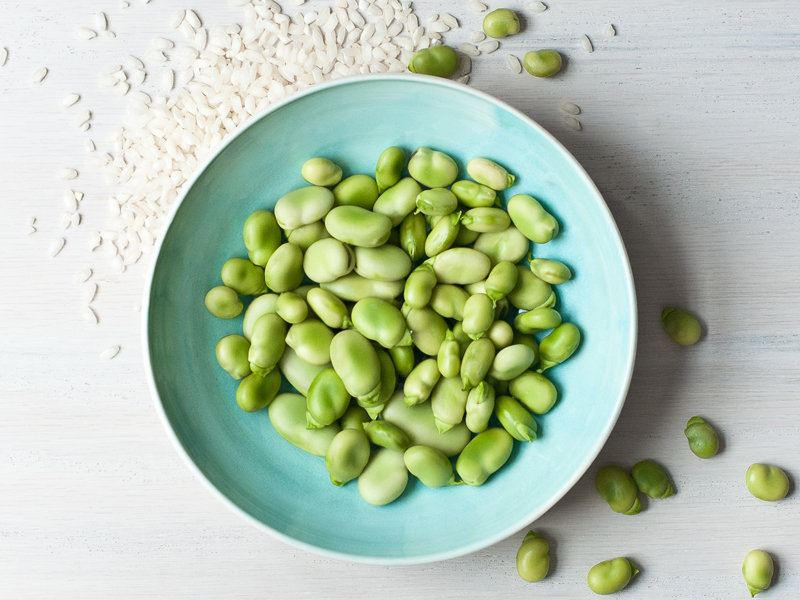We’ve all been there—that moment when you see the fresh fava beans come in, the first in a brigade of spring vegetables, like knobby gatekeepers throwing open wide the doors of spring. And you want to use them because their bright green cries of freshness sound so sweet and welcoming to your ears after months of root-vegetable monotony. But then you realize you haven’t the faintest idea to do with them. Well, read on and you will.
Favas arrive in early spring, and you want to look for plump, firm pods. Run your fingers over each pod to make sure there are beans inside. When you split them open you should see pale green beans nestling in a soft, fuzzy inner shell.
If you’re feeling like a traditionalist and have some time on your hands you’ll want to open all the pods and collect the beans in a bowl. They’re not ready to eat yet, you’ve still got to blanch them and go through another peeling step. Discard the stripped pods and add the fava beans to a pot of boiling, salted water for one minute. (If you have very large beans—bigger than an inch—you’ll want to blanche for a minute or two longer). Then strain, and shock them by throwing them in a bowl of ice water. From there, you fish out each bean and, gently squeezing the narrower end, pop out the inner bean from its skin. What you should see is a much smaller, brilliantly green, kidney-shaped bean.
Now you’ve got favas you can eat. You can add them to succotash, pastas, or use them in a risotto like the recipe you’ll find below (Spring Vegetable Risotto). You can also just smash them up with a little olive oil, mint and Parmesan cheese to spread on top of bread to make a light, spring crostini.
Or, if all that sounds like an awful hassle, you can do something completely different. Toss whole fava pods with olive oil, salt and pepper and spread on a baking sheet in a single layer. Roast at 450°F for 25 minutes or until tender. Put the roasted pods in a bowl, sprinkle with sea salt and serve like edamame.
There. Wasn’t that easy? Now you have no excuse not to welcome spring with favas this year.
View the Spring Share 2014 PDF
